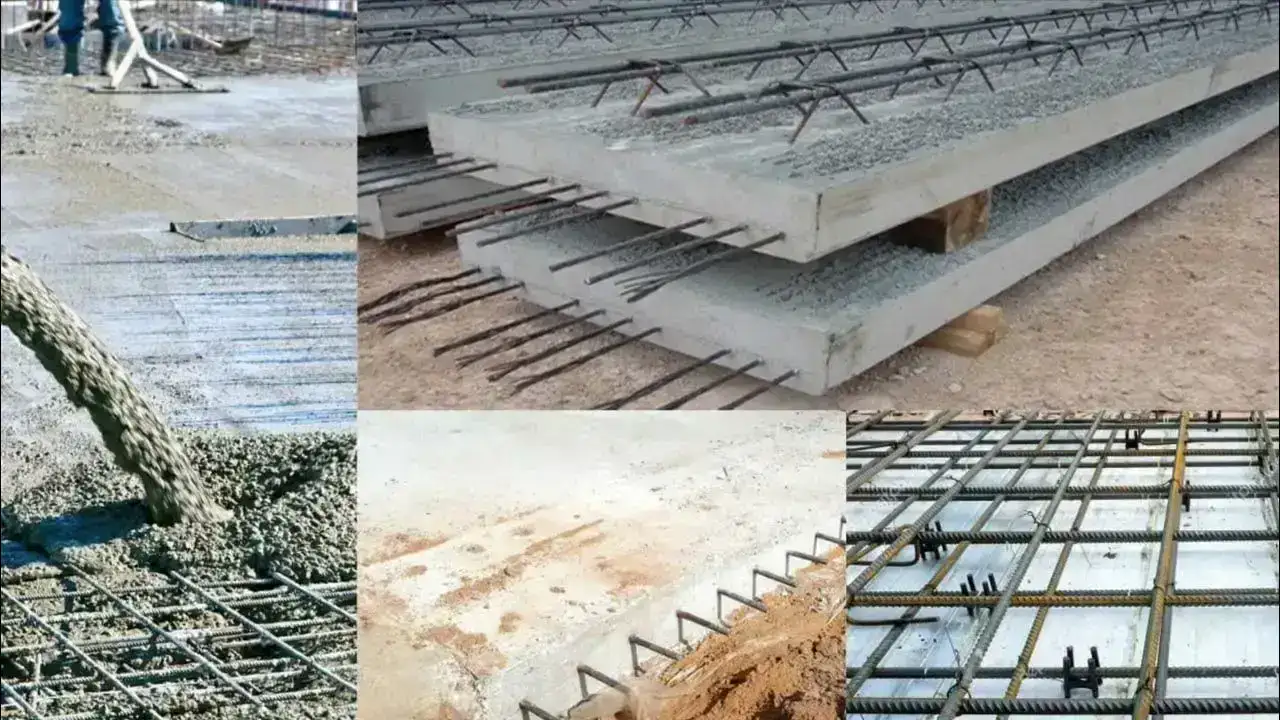Modern construction is dependent on reinforced concrete. This stuff is very vital in modern infrastructure concerning the strength and durability of bridges, roads, residential houses, and skyscrapers. But what exactly is reinforced concrete, and why has it become an important factor in the built environment? This blog goes into a close analysis of composition, benefits, and general applications of reinforced concrete, which has practical meaning to engineers and architects as well as to interested individuals.
NEED BUILDING MATERIALS THAT CAN WITHSTAND TIME? FIND OUT HOW THE NEXT PROJECT CAN BE ENHANCED WITH REINFORCED CONCRETE!
What is Reinforced Concrete?
Reinforced concrete is a powerful building material that is produced after a mixture of concrete and steel bars (rebars). Stress in terms of extremes will be there in concrete, and this will be called compression, while steel will be used against the force of pulling, called tension. Each of them presents its individual weaknesses; however, they are toughest and most flexible when combined. This mixture, withstanding bending and breaking, makes this combination of material most effective in buildings and all other construction.
Composition of Reinforced Concrete
A reinforced concrete structure consists of many major elements, which are critical to its behavior:
Reinforced concrete is a powerful building material that is produced after a mixture of concrete and steel bars (rebars). Stress in terms of extremes will be there in concrete, and this will be called compression, while steel will be used against the force of pulling, called tension. Each of them presents its individual weaknesses; however, they are toughest and most flexible when combined. This mixture, withstanding bending and breaking, makes this combination of material most effective in buildings and all other construction.
- Cement: This is the binding agent, which is typically Portland cement mixed with water to create a paste on which all other components are attached.
- Aggregates: These are sand, gravel, and crushed stone. They provide the concrete with its bulk and influence such characteristics of the concrete as workability and strength.
- Water: In fact, one of the most necessary components in this process is water. It has the power to change desired strength and useful life by altering water-cement ratios.
- Modifiers: Additives that are used to change the working or setting time, workability, or certain durability characteristics.
- Reinforcement Bars (Rebar): These are steel bars, meshes, or cables that are embedded within concrete. These will support the tensile loads from structures.
These materials create a composite that acts as one, unique structure and can sustain a variety of loads and stresses.
Advantages of Reinforced Concrete
High Strength and Durability
Reinforced concrete is capable of withstanding tensile and compressive stresses, and thus is the best construction to use when construction is required to last long. When properly designed, it stands up well in the extreme conditions of the environment, and it will also resist weathering, corrosion, and chemical attacks.
Fire and Weather Resistance
Contrary to wood or plastic, reinforced concrete does not burn/ melt. It can tolerate the severest climate conditions of heat, cold, and moisture.
Versatility
Construction forms beams, columns, slabs, domes, and shells. Architects and engineers can thus realize those impossible, complex, and innovative designs.
Low Maintenance
Reinforced concrete, once set, needs little maintenance. Its immunity to decay and pests contributes to its durability.
Cost-Effective Over Time
Reinforced concrete is a very cost-effective alternative in the long run. Although its initial costs are relatively high in comparison to other materials, it has low maintenance requirements, is durable, and has a very long service life.
Availability of Materials
Raw materials used in reinforced concrete, including cement, aggregates, and steel, are easily found in most regions of the world and hence make it a viable construction method in international construction works.
Common Uses of Reinforced Concrete
In nearly all construction, the reinforcement is carried out by means of concrete. These are the most common applications of it:
Buildings
Reinforced concrete is used in small houses to high-rise buildings and is an ingredient in residential, commercial, and industrial buildings. The material forms bases for slabs, beams, columns, and foundations.
Bridges
Bridges are subjected to tremendous loads. Reinforced concrete enables the development of robust and long spans that require decades before being maintained.
Roadways and Pavements
Reinforced concrete is commonly used in highways, streets, and airport runways to provide a long-term service when they are subjected to a constant load of vehicles and aircraft.
Tunnels and Subways
Subground buildings are subject to special pressures and water problems. Reinforced concrete aids the structural integrity in such a harsh environment.
Sustainability Considerations
The care with which the current technologists of concrete treat their materials may be traced to the enactment of reinforced concrete. The environmental impact is now being minimized by using blended cements and recycled aggregates, and corrosion-resistant rebars. Also, the reinforced concrete has a long life and low maintenance, which leads to reduced lifecycle emissions. However, this is all the more important in sustainable building initiatives.
Final Thoughts!
Reinforced concrete is not just a material. It has become the backbone of the modern infrastructure. The secret element of its composition, its unmatched strength, and amazing flexibility make it the most preferred construction project worldwide. By knowing the mechanism and the applications of the same, we are better placed to appreciate the daily constructs that we so habitually neglect.

